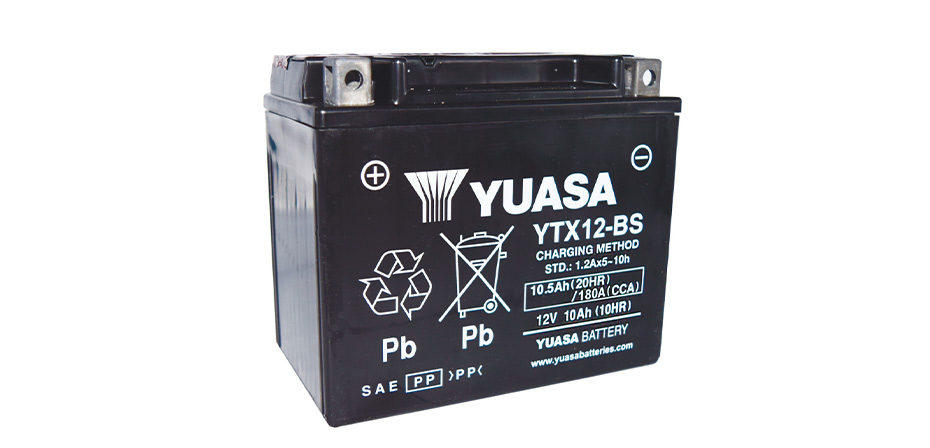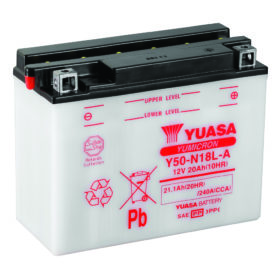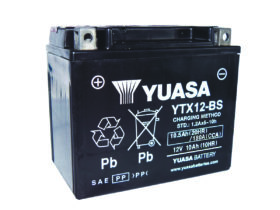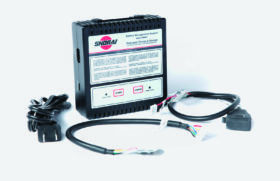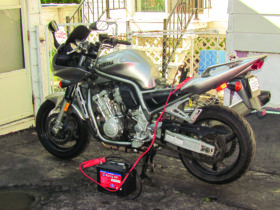Like most things, you get what you pay for
A battery is an integral part of your bike, and even if it’s a maintenance-free type, it still requires some care. Maintenance-free batteries need an occasional charge, and should be disconnected if the bike sits idle for more than a month. Motorcycles draw some current with the ignition switch turned off, which will eventually drain the battery. Disconnecting it eliminates this problem.
If you do leave the battery connected while the bike sits, you should give it a monthly low-amperage charge — about two amps overnight. Or you can choose to leave the battery connected to a smart charger, like those made by TecMate or Battery Tender, which will supply only the current needed to keep the battery full. Leaving a battery connected to a standard charger for an extended period of time will either dry out the cells in a lead-acid type battery, or cause it to overheat, neither of which is good.
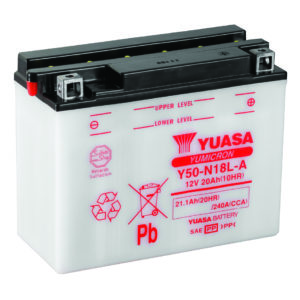 There are several things to consider when replacing an exhausted battery, and there are different types of batteries, from very cheap lead-acid types (cheap in the literal sense, which is reflected in quality), to expensive lithium-iron batteries.
There are several things to consider when replacing an exhausted battery, and there are different types of batteries, from very cheap lead-acid types (cheap in the literal sense, which is reflected in quality), to expensive lithium-iron batteries.
The first thing to look at is the CCA (Cold Cranking Amps) rating, which is the amount of amperage a battery can deliver for 30 seconds at -18 C. This number is directly related to the battery’s performance: the higher the CCA, the better the battery. A higher CCA means the battery has more starting power for a longer period of time than one with a lower CCA.
The most common, least expensive type of battery is the conventional lead-acid, wet-cell battery. This is actually a very good battery for the price, but you have to be wary of the really cheap ones from off-brand manufacturers. A Yuasa lead-acid battery for my KLR650 retails for $136, while its off-brand equivalent costs just $49. Yuasa is a producer of OEM batteries, and I can tell you from experience that the cheaper off-brand batteries last about a third as long as a Yuasa battery when given the same maintenance. So cheap isn’t the way to go.
Also note that lead-acid batteries are sometimes sold without the acid required to activate them, so you might have to either buy it separately and fill it yourself, or have it filled where you buy the battery. It’s also important to know that, while a new, freshly filled battery will generate enough current to start your bike right after you pick it up from the parts counter, it should not be put into service unless it has been given a proper initial charge. A battery that hasn’t received that initial charge probably won’t make it through the season.
Many batteries have the charging information printed right on the battery case, or in the instruction sheet. Read it!
Lead-acid batteries also have a vent hose that has to be carefully routed below and away from the bike, or the acid fumes they expel will corrode or stain anything they come into contact with. Because such a battery is vented to the atmosphere, it also requires occasional topping up, which should be done with distilled water.
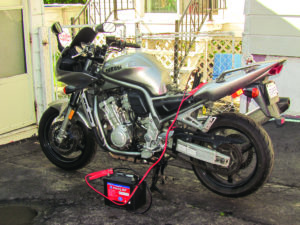 Maintenance-free, or AGM (Absorbed Glass Mat) batteries are a step above the wet-cell batteries in longevity and performance, and they are more costly; the Yuasa AGM battery for my KLR retails for $166. An AGM battery is sealed, and can therefore be installed upright or sideways, and it does not lose acid (in gel form, not liquid), so it does not need topping up. It also has a higher CCA than its equivalent — the lead-acid battery for my KLR is rated at 175 CCA versus 210 for the AGM.
Maintenance-free, or AGM (Absorbed Glass Mat) batteries are a step above the wet-cell batteries in longevity and performance, and they are more costly; the Yuasa AGM battery for my KLR retails for $166. An AGM battery is sealed, and can therefore be installed upright or sideways, and it does not lose acid (in gel form, not liquid), so it does not need topping up. It also has a higher CCA than its equivalent — the lead-acid battery for my KLR is rated at 175 CCA versus 210 for the AGM.
Finally, there’s the maintenance-free lithium-iron battery, and it’s the priciest of the bunch ($225 for my KLR). However, it has several benefits over lead-acid and AGM batteries, the most prominent being its much lighter weight. While boasting the same 210 CCA as my KLR’s AGM, the Shorai lithium battery weighs just 1 kg, a difference of 2.5 kg.
Other advantages of choosing a lithium-iron battery are that it will pump out its maximum amperage until it is dead, it has a slower discharge rate when not in use, and it provides better cold starts, though it will need an initial “wake up” in cold weather before it can deliver full power. This can be done by turning on your bike’s lights for about 30 seconds.
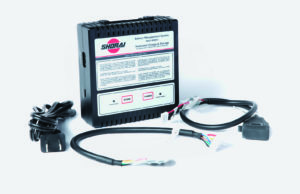 Lithium-iron batteries are smaller than their lead-acid counterparts, so Shorai sells it with foam shims to fit it into the battery box. A lithium-iron battery charger costs a bit more than a regular charger.
Lithium-iron batteries are smaller than their lead-acid counterparts, so Shorai sells it with foam shims to fit it into the battery box. A lithium-iron battery charger costs a bit more than a regular charger.
My AGM is in its seventh season, so for me, it’s been very cost-effective. I’m still undecided if the lighter weight of a lithium-iron battery will merit the extra cost of a replacement when mine does finally give in.
Technical articles are written purely as reference only and your motorcycle may require different procedures. You should be mechanically inclined to carry out your own maintenance and we recommend you contact your mechanic prior to performing any type of work on your bike.









